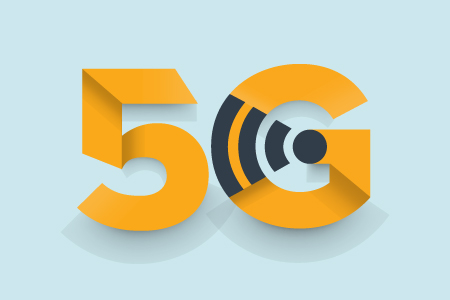How 5G Will Impact Enterprises & Communities

Remote Experts, Cord Cutting & Other Game-Changing Trends are Poised to Thrive as 5G Evolves
5G is one of those “buzzwords” that takes the world by storm, but many wonder what the substance behind the hype will actually look like. In other words, how will 5G impact enterprises and communities on a day-to-day basis?
As 5G networks trials ramp up and cellular carriers draw closer and closer to real-world rollouts, a variety of viable and eye-opening use cases are piquing people’s attention — ranging from remote subject matter experts to augmented reality and real-time video surveillance. Many of these use cases already are thriving with 4G LTE but are poised to usher in even greater performance, reliability, and cost-efficiency once 5G arrives.
Remote Subject Matter Experts (SMEs)
As customers in various industries continue to demand better service available anywhere and anytime, remote SMEs are becoming more important. The idea of providing and receiving specialized, expert support anywhere has vast potential in everything from airplane maintenance and plant operations to healthcare.
The remote SME trend already is changing the way many doctors provide care. For instance, 4G LTE connectivity is connecting patients and specialists all over the world through diagnostic telemedicine — saving time, money, and lives. A physician sitting anywhere that has reliable connectivity can virtually administer a real-time examination of a patient sitting elsewhere with a nurse in front of a telemedicine cart on wheels.
Telemedicine kiosks are popping in up places like supermarkets and other big stores, providing opportunities to virtually meet with doctors about minor medical issues on the spot.
Today, 4G LTE enables doctors to remotely review real-time data from stethoscopes, otoscopes, vital signs monitors, ultrasound devices, blood glucose monitors, and ECG machines. Once 5G launches, healthcare practitioners will be able to view real-time HD video and confidently perform procedures remotely, relying on the high bandwidth and low latency of 5G.
Augmented Reality
5G also will be a game-changing advancement for augmented reality (AR) technologies. AR will transform many industries, such as public safety, retail, and public transportation — and low-latency, high-bandwidth connectivity will be a crucial enabler.
Public Safety
– Officers with a computer-driven AR helmet or visor could process threats and give detailed information on their surroundings during emergencies. AR also could be used to give real-time navigation information.
Retail
– The retail market most likely will adopt AR in many forms, including the ability to shop from anywhere; visualizing items in different environments (such as virtual clothing on the shopper, or seeing a new piece of furniture virtually in your home environment); in-store use highlighting sales and detailed information on products.
Public Transportation
– Residents could use AR to find their way around a city while tourist areas are highlighted (sponsored by advertising).
Cutting the Wires
Fixed sites such as retail stores and offices rely on wired lines less and less with each passing year. The rise of 4G LTE has enabled many enterprises to get branch locations up and running with instant connectivity on Day 1 of store deployment rather than waiting until wired lines are installed, which can take weeks if not months. Companies are opening their doors earlier and making money sooner.
When 5G arrives and eventually provides a viable replacement for fiber, in some scenarios, the “cut-the-wire” approach will become more common — especially if 5G pricing models begin to look like cable plans, as predicted. With 5G as primary WAN and 4G LTE providing failover connectivity, unlimited data will help open the doors of better speeds and lower latency with wireless to a much broader group of organizations than ever before.
Video Surveillance
Video surveillance is extremely important in virtually every industry today, as companies and municipalities look to deter criminals and provide support during investigations. However, in many locations, capabilities are limited. In places where wireless connectivity is the best option, surveillance footage is stored and then forwarded later. Another option is to offload the data via WiFi whenever a designated vehicle can drive to that location.
The low latency and high bandwidth of 5G — along with efficient pricing — will allow real-time HD video monitoring, which will help law enforcement agencies and other first responder organizations react more quickly during emergencies, and with better information at hand. This video footage could also be shown to officers using AR-connected helmets or visors.
For More Information:
- For Cradlepoint Solutions Contact USAT
- For Cradlepoint Products, Start Shopping
Share this Post













